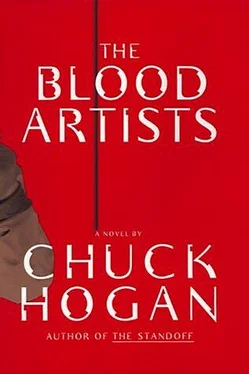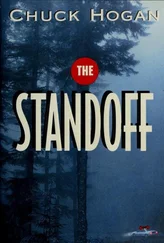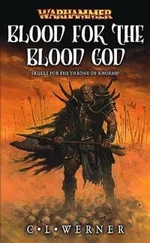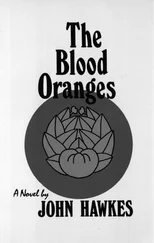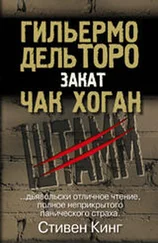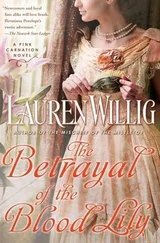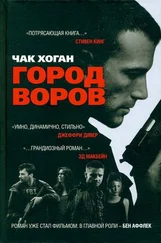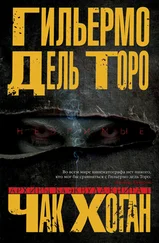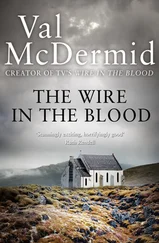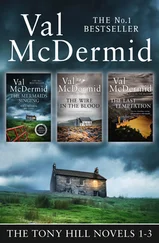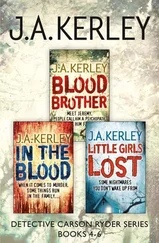Another thirty minutes and the path began to widen again. Dirt shoulders appeared and the road surface ran smooth. We passed a fallen tree neatly quartered beside the road, and it was a relief to see something touched by the hand of man.
Misty sunlight streamed through gashes in the high canopy ahead, and suddenly the jungle opened on a plot of wet dirt cleared around a large, one-story plantation style house.
The house was constructed of whitewashed stone. Its clay tile roof glistened from the sunny rain, as did twin pairs of shuttered French windows in front. A fat path of crushed rock led like a white mat to the door. Another muddy car, a Japanese 4x4, was parked near the walk. Above the door hung a sopping flag fashioned waist-to-hem from a tattered, yolk-yellow skirt. It was a homemade flag of quarantine.
We stepped out into light rain and swung out the spare tire hinge to open the rear door. Peter removed his hat and broke the tape seal on a CDC-stamped carton, and we stripped off our gloves, dropping them into a cubic repository emblazoned with the international biohazard symbol. We pulled on two fresh pairs each, first standard latex surgical, then dull green contact issue extending beyond the wrist, sealing them against our skin with adhesive tape. Neither of us had much hair left on his forearms. Peter pulled blue cotton surgical scrubs on over his clothes and I did the same, forsaking the thicker, safer contact suits, selecting for mobility and comfort in the seething clime. It occurred to me at the time that it was always nice to have one higher level of protection to fall back to.
Respirators went on last. I swept my hair in under a surgical cap, then pulled the flexible harness down over the back of my head, adjusting the belt so that the customized black rubber face piece set flush across my brow, behind my ears, and below my chin — again creating a seal. The stubby inhalation valves, extending like insect mandibles forty-five degrees off each side of the chin piece, decontaminated incoming air by exposure to ultraviolet light. UV light destroyed viruses by shattering their genetic material, and was radiation-safe to three hundred and fifty nanometers. A smaller black exhalation valve was set in between.
Raindrops picked at my Plexiglas view. We powered up our respirators, hearing the dull whine emitted by the light source, and lifted the emergency aid kits out of the cargo hold, starting for the house.
The door beneath the dripping flag of quarantine was garnished with a childlike weaving of vines, stems, and berries. An African man answered my knock. He was in his sixties, wearing an agricultural mouth and nose shield tied around his head, his eyes baggy and blinking above it. His open shirt collar exposed pearls of sweat. His gloved hands, one hanging at his side and the other holding the door, were streaked with blood.
“Dr. Kaunda,” Peter said through his mask.
The doctor looked from respirator to respirator, then focused on our scrub shirts and the letters stenciled there, CDC. He looked out at the Pinzgauer in the rain beyond us, a dazed expression in his eyes.
“Parlez-vous français?” he said.
I nodded, feeling the muzzle like awkwardness of my respirator.
“Le vaccin?” said Kaunda.
Peter held up a small plastic box.
“Par ici.” This way.
We entered. A woven mat ran the length of the hallway inside. Dr. Kaunda shut the door behind us and at once the trapped heat of the shuttered house raised pops of sweat on my exposed upper arms. The respirator and twin layers of gloves dulled most of the senses. Taste was lost and touch and smell were well cloaked, though sight remained strong — I could see a light flickering through an opening at the end of the hall — and sounds were muffled but audible over the ultraviolet whine. I discerned a faint cough somewhere within.
Kaunda led us slowly down the hall. The windows were shut in accordance with the rules of quarantine, protecting against the possible introduction of a vector — an insect or rodent or some other conduit of microbial transmission — even though smallpox was passed directly from person to person. A pall of sweat shaded the back of Dr. Kaunda’s pink cotton shirt. He felt his way along the wall, moving more like a parent than a doctor.
We turned into a small, flickering bedroom. A fat candle hung unswinging in a ceiling lantern over a stripped bed upon which a nine-year-old girl lay twisted upon a patchwork of towels. She was nude, her arms out at her sides, the swell of her stomach sinking and filling as breath huffed out of her small, blistered mouth. Bulbous pox sores speckled her inflamed flesh, most prominently on her neck and arms, although common also to her torso, upper legs, and groin. The largest ulcerations were swollen to more than a centimeter.
“Elle ne peut pas supporter être touchée,” Dr. Kaunda said. She cannot bear to be touched. He stood with the underside of his left forearm pressed against his brow.
Some of the sores were broken and discharging pus, the sand-colored towels under the girl’s back showing mixed stains of yellow and red. A rash imbued the unblemished patches of her dark skin with a ruddy glow.
Her right eye was swollen shut, the bloated lid pored and crusting over. Her left eye remained open, and was bursting with veins.
“En feu,” she hissed. Burning.
Shed hair lay in wiry, doll-like strands atop her undressed pillow. The bed was soiled with waste and flakes of dead skin.
Peter moved quickly around the foot of the bed. There were trinkets and carved gourds on a wooden night stand, cleared back from a basin of reddened water. He slid his case onto the table and swiped the gourds and trinkets noisily to the unmatted floor.
Dr. Kaunda said behind us, “Elle ne peut pas supporter même la pression d’un drap.” She cannot bear even the pressure of a bed sheet.
I said sharply, “She can hear you.”
“Maman,” said the girl with a cluck of her blistered tongue, shivering, straining up off the bed.
I knelt and set the aid kit down on the floor and fumbled open the clasps. I admit that I did not know what to reach for first.
“Her name,” I said behind me.
Kaunda had found a child’s wooden rocking chair in the far corner. He was squeezing himself into it.
“Her name,” I said again.
“Jacqueline,” he answered.
I rose empty-handed and moved to her. The new rubber smell of my respirator had been replaced by the stench of human decay, seeping like a gas down my throat. I fought the odor as I stood over the writhing body of the girl. Peter was preparing an injection across the bed.
“Jacqueline,” I said in French. “My name is Dr. Pearse. We have come for you.”
Her open eye flickered and fixed overhead. “La bougie,” she insisted. The candle.
Peter straightened with the syringe. “Delirious,” he said. “Get clear.”
Peter popped off the plastic tip protector and readied the needle above the blistered pocket of her left elbow. He located the median cephalic vein and entered it.
She arched and thrust out a low-pitched groan of pain. I kept talking to her in French, partly in order to calm myself.
“It is all right,” I said many times.
Her venous left eye bulged as though straining to see through the ceiling. Peter remained over the syringe and the girl’s tensed arm. I realized then that he was not vaccinating her, but was instead drawing out blood. “Peter!”
He straightened, holding a full red barrel. “We need a clean sample for PCR,” he said, never stopping his work, chucking off the needle hub and discarding it, setting aside the full barrel and reaching for a proper hypodermic. He braced her arm at the biceps and stuck her a second time, easing down on the plunger, voiding the barrel and shooting the inoculant into her system. She arched again and cried out shrilly, a cry without human precedent.
Читать дальше
